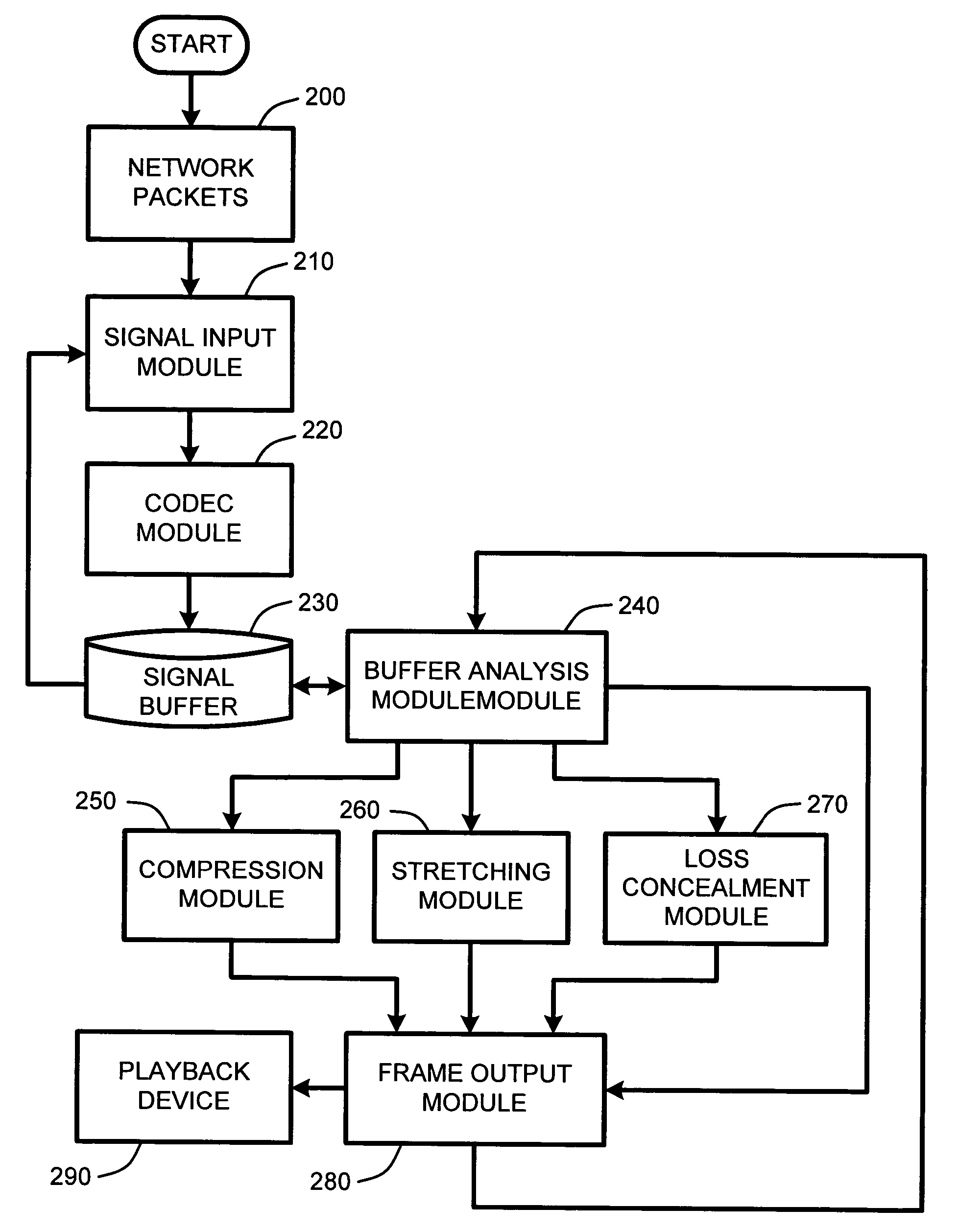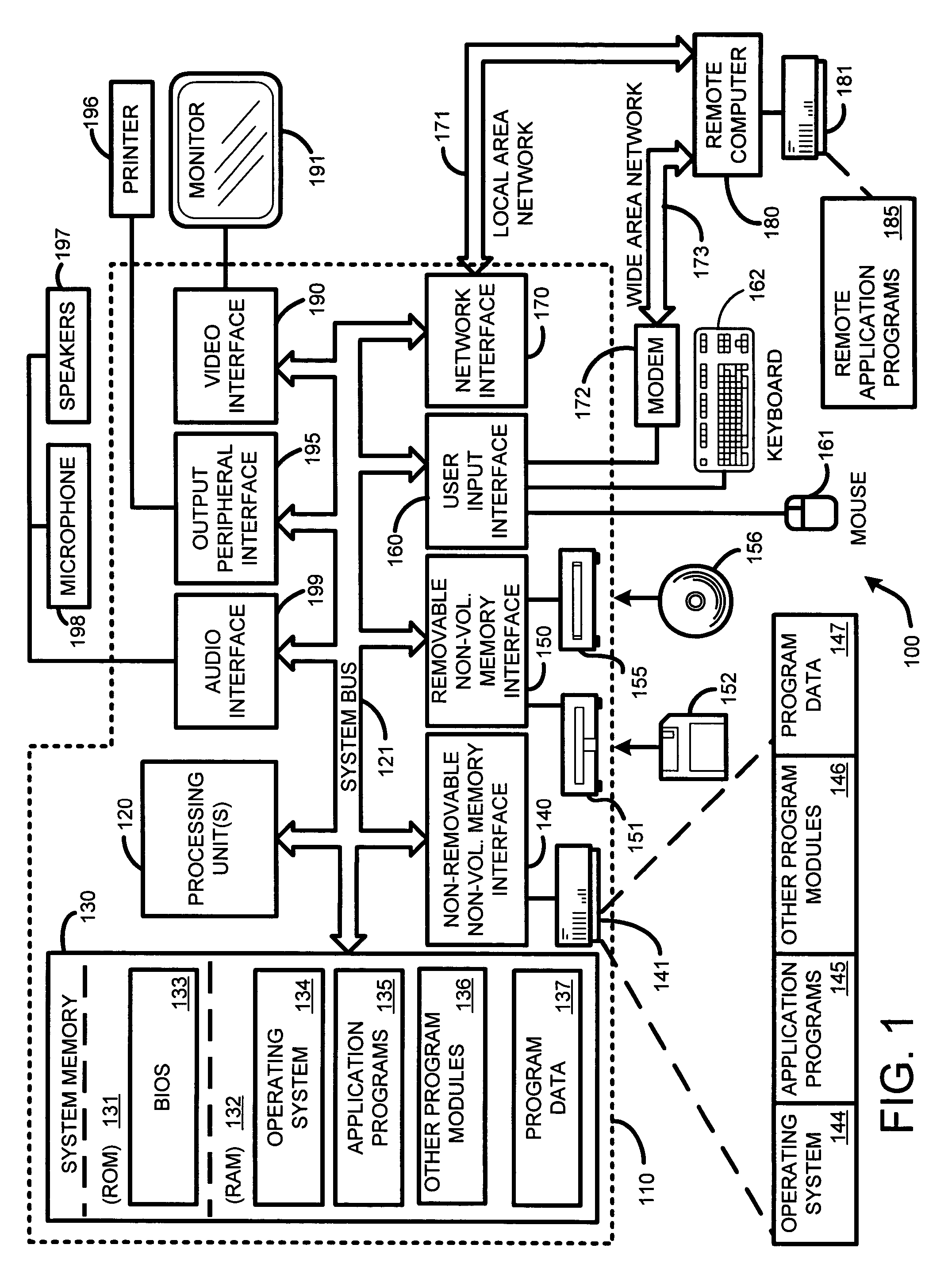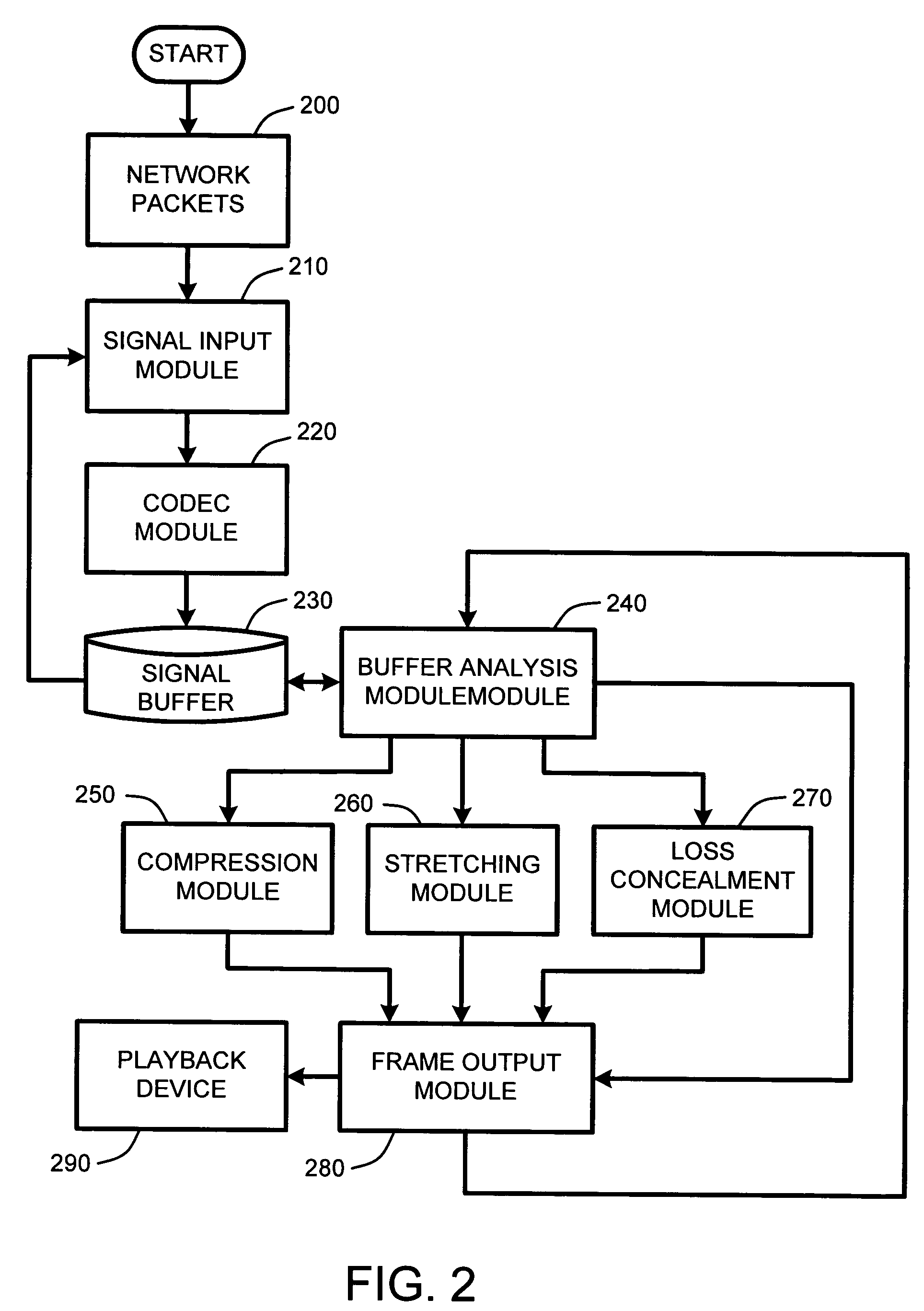Jitter control and
packet loss concealment are two well-known techniques for improving the quality of signals transmitted across lossy and delay prone packet-based networks such as
the Internet and other conventional voice-based communications channels. Clearly,
signal quality and
system performance improves as a function of both reduced delay and reduced signal artifacts. Thus, to address the need for high quality audio
jitter control and
packet loss concealment, an “adaptive audio playback controller” is provided for performing automatic buffer-based adaptive
jitter control and
packet loss concealment for audio signals transmitted across a packet-based network as a function of buffer content. Further, the de-jittering and packet loss concealment processes described herein are compatible with most conventional codecs for decoding and providing a playback of audio signals.
In contrast, the adaptive audio playback controller described herein operates as a function of buffer content rather than packet
receipt time. For example, unlike conventional stretching schemes, the audio playback controller begins stretching the contents of the buffer whenever a particular packet, e.g., packet n, has not arrived by the expected or scheduled time. In this case, the signal existing in the buffer is stretched until the delayed packet arrives, or until it is eventually declared “lost.” This differs from conventional stretching processes in that rather than immediately declaring a packet as a “late loss” when it is not received within a predetermined period of time, the contents of the buffer are stretched while simultaneously determining an appropriate
time limit for declaring that packet to be a late loss as a function of the current buffer contents. Furthermore, the
receipt of a subsequent packet (e.g., packet n+1, where packet n represents the expected packet) will change this
time limit. Consequently, the adaptive audio playback controller provides a significantly increased packet receipt time prior to declaring a late loss for any given packet. As a result, packet “late loss” is significantly reduced, thereby resulting in a significantly reduced use of packet loss concealment processes for reducing artifacts in the signal, and a perceptibly cleaner signal playback. Further, and more importantly, the increased packet receipt time does not come at the cost of increased
signal delay.
A second loss condition relates to receiving a subsequent packet prior to receiving the next expected packet in the transmission. Typically, this results from either packet inversion, or actual packet loss. As noted above, conventional schemes typically will generally ignore
packet arrival order, and wait the maximum amount regardless of whether a subsequent packet has been received or not. In contrast, the adaptive audio playback controller reduces the time required to declare a late loss whenever a subsequent packet is received prior to receiving the expected packet. However, to minimize any declarations of “late loss” due to packet inversion, the adaptive audio playback controller still waits for some time before declaring a loss, even if a subsequent packet has already been received. On the other hand, since packet inversions are rare, the waiting is kept to a minimum, in order to avoid introducing additional artifacts in the signal. More specifically, the signal in the buffer will not be stretched beyond the period that the buffered signal would be stretched in the case where a packet loss would be declared, as noted above. Once that time has been reached, the packet n is declared as lost, and the packet loss concealment processes described herein are used to reduce or eliminate artifacts in the signal.
As noted above, signal stretching is used to compensate for delayed or lost packets. On the other hand,
signal compression is used to address the case where the signal buffer has become too full, with a resulting increase in
signal delay. Therefore, by compressing the signal contained in the buffer, playback time of the buffered signal is reduced, the buffer is at least partially emptied, and the signal playback delay is reduced. As described herein, when compressing the signal, it is typically a good idea to wait for a segment of speech where compression is expected to produce little or no artifacts, rather than simply compress the next segment to be played out. One simple solution is to compress only in between talk spurts. However, a better process considers how much compression is desired (i.e., how far behind in
time signal playback is), and how easy it is to compress a particular segment while minimizing artifacts. Further, the need to compress the buffer implies that a long signal segment is in the buffer, and that therefore there is some freedom on where to compress the signal.
In view of the above summary, it is clear that the adaptive audio playback controller provides a unique
system and method for providing buffer-based jitter control and packet loss concealment via adaptive stretching and compression of frames of a received
audio signal while minimizing perceivable artifacts in a reconstruction of that signal. In addition to the just described benefits, other advantages of the system and method for providing buffer-based jitter control and packet loss concealment for a received audio signal will become apparent from the detailed description which follows hereinafter when taken in conjunction with the accompanying drawing figures.
 Login to View More
Login to View More  Login to View More
Login to View More 


